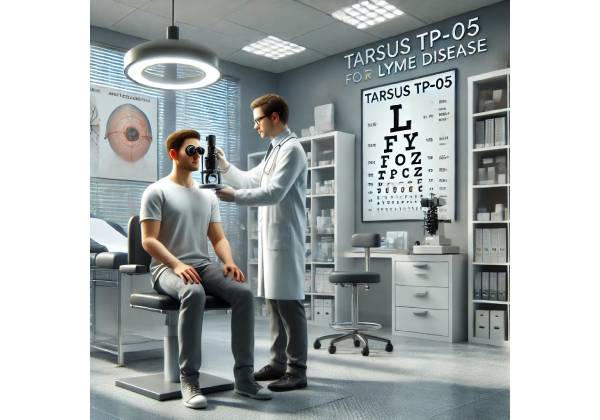Cannabis : Comprehensive Overview of Benefits, Active Compounds, Properties, and Safety
Cannabis (Cannabis sativa) is a plant that has captured global attention for millennia. Sometimes referred to by colloquial names like “marijuana” or “hemp” (depending on its use and THC content), cannabis stands at the intersection of cultural, medicinal, and industrial interest. Historically revered in ancient pharmacopeias, it later found itself subject to intense legal and social debates over psychoactivity,...
Canella: Comprehensive Guide to Benefits, Applications, and Lesser-Known Spice Qualities
Canella is a fascinating herb that often flies under the radar when people discuss aromatic plants or spices, yet it carries a rich history and an assortment of potential benefits. You might come across its bark labeled as “white cinnamon” or see references to it as “wild cinnamon,” hinting at its aromatic qualities. Scientifically known as Canella winterana, this...
Candytuft: Health Benefits, Applications, and Key Characteristics
Candytuft is a charming flowering plant that often goes unnoticed by casual garden observers, but it carries a rich botanical story and a surprising range of potential benefits. Best known for its clusters of petite white or pink blossoms, candytuft belongs to the Brassicaceae (mustard) family—placing it among relatives like broccoli and kale, although you’d never guess that from...
Candelilla: Benefits, Properties, Eco-Friendly Aspects, and Modern Applications
Candelilla is a fascinating plant that many people encounter without realizing it—most often through candelilla wax, a popular ingredient in cosmetics, polishes, and even certain foods. Naturally found in the arid regions of northern Mexico and parts of the southwestern United States, this succulent-like shrub is best known for producing a waxy coating to protect itself from harsh desert...
Camphor: Health Benefits, Practical Uses, and Medicinal Properties
Camphor is a fascinating substance that has intrigued people around the world for centuries. Often extracted from the wood of the camphor tree (Cinnamomum camphora), it carries a signature smell that’s easy to recognize—sharp, cool, and pungent. Beyond its distinct scent, camphor has made its mark in everything from traditional medicine and religious ceremonies to modern manufacturing and personal...
California Poppy: Benefits, Cultural Background, and Practical Guidelines
California poppy is one of those unmistakable plants that brighten up entire fields with their vivid orange blossoms. Known scientifically as Eschscholzia californica, it holds the honor of being California’s state flower—a fitting tribute given its widespread presence across the region’s grasslands, hillsides, and even urban landscapes. Beyond its visual appeal, California poppy has a longstanding history in local...
California Bay Laurel: Properties, Bioactive Compounds, and Modern Health Advantages
California bay laurel, scientifically known as Umbellularia californica, is a broadleaf evergreen tree native to the coastal forests and mountainous regions of California and parts of Oregon. It stands out for its glossy, aromatic leaves and a history deeply interwoven with local Indigenous traditions, regional cuisine, and modern herbal interest. Commonly referred to by names such as California bay,...
Calendula: Versatile Uses, Potential Health Benefits, and Safety Guidelines
Calendula is a vibrant, golden-orange flowering plant that has captured the attention of gardeners and herbal enthusiasts for generations. Scientifically referred to as Calendula officinalis, it’s also known by common names like pot marigold and English marigold (though it’s distinct from the ornamental marigolds in the genus Tagetes). You’ll frequently spot its cheerful blossoms gracing flower beds, herbal gardens,...
Calamus: Heritage, Potential Benefits, and Safety Guidelines
Calamus, scientifically known as Acorus calamus, is a perennial herb that grows in wetland areas such as marshes, riverbanks, and lake edges. It often goes by nicknames like sweet flag or sweet calamus due to its pleasant aroma. People across different cultures have valued calamus for centuries, employing its rhizomes (the thick, horizontal stems) in various traditional remedies, culinary...
Calamint: Health Benefits, Applications, and Medicinal Properties
Calamint is a charming herb belonging to the mint family (Lamiaceae), celebrated for its fragrant leaves and subtle yet captivating flavor. Known scientifically as Clinopodium nepeta (though it may appear under various synonyms), calamint can sometimes be overlooked in favor of bigger names like peppermint or spearmint. Yet this resilient plant has an intriguing heritage that spans European culinary...
Calabar Bean: Health Benefits, Applications, and Safety Notes
The Calabar bean has a fascinating—and somewhat notorious—reputation among traditional herbs. Scientifically known as Physostigma venenosum, it originates from tropical regions of West Africa, where it has held significance for centuries in local customs and medicinal practices. Unlike many herbs people encounter in day-to-day life, the Calabar bean is more specialized, known for its highly potent compounds and the...
Cajeput: Applications, Distinct Properties, and Wellness Advantages
Cajeput is a fascinating plant that has been part of various traditional wellness practices for centuries. Often recognized for its distinctive, penetrating aroma, it comes from the Melaleuca genus, which also includes tea tree and niaouli. The name “cajeput” is sometimes spelled as “cajuput,” and you’ll frequently see references to cajeput essential oil, an extract said to offer a...
Cacao: Complete Guide to Key Benefits, Active Compounds, and Practical Uses
Cacao has a reputation that goes far beyond satisfying a sweet tooth. It’s the main ingredient in chocolate, but when you look beneath that decadent surface, you’ll find a complex plant bursting with unique phytonutrients, beneficial compounds, and a long cultural history. This remarkable seed comes from the Theobroma cacao tree—an evergreen typically found in tropical regions near the...
Cabbage Palm: Benefits, Active Ingredients, and Holistic Uses
The cabbage palm is a truly remarkable plant that has captured the attention of botanists, historians, natural health enthusiasts, and landscape architects alike. Found predominantly in subtropical and tropical regions, this iconic palm is renowned not only for its striking appearance but also for its diverse range of applications. Its robust trunk, fan-shaped leaves, and resilience against harsh environmental...
Amniotic Membrane Grafts with Cross-Linking
Regenerative Healing Solution for Enhanced Recovery in Post-Cross-Linking Keratoconus Patients 1. Therapy Overview: Harnessing Amniotic Membranes for Post-Keratoconus Cross-Linking Recovery Keratoconus remains a leading cause of corneal irregularity and progressive visual decline, prompting innovative treatment strategies to stabilize and restore the cornea. Corneal cross-linking (CXL) has emerged as a mainstay solution for halting keratoconus progression—yet postoperative healing, comfort, and corneal regeneration...
Allogenic Intrastromal Ring Segments (CAIRS) Using Donor Ring Segments to Reshape and Stabilize the Keratoconic Cornea
A Fresh Perspective on Corneal Remodeling: A Comprehensive Overview of CAIRS Keratoconus, a progressive thinning and bulging of the cornea, has long been a challenge to patients and eye care providers due to its impact on vision and quality of life. For many, conventional treatments—like rigid contact lenses, corneal cross-linking (CXL), or intrastromal corneal ring segments (ICRS) made from synthetic...
Alfibercept The Next-Generation Anti-VEGF Therapy Revolutionizing Diabetic Retinopathy Treatment
Introducing Alfibercept: A Pioneering Option for Diabetic Retinopathy Care Diabetic retinopathy (DR) remains one of the leading causes of vision loss globally, challenging both patients and clinicians with its progressive nature and potential for severe visual impairment. While established anti-VEGF (vascular endothelial growth factor) therapies have helped slow disease progression, there is growing demand for treatments that offer more potent,...
AIOLIS FDA-Approved Innovation for Assessing Visual Disturbances Post-Cataract Surgery
AIOLIS™: A Next-Generation Approach for Post-Cataract Surgery Vision Evaluation Cataract surgery stands among the most routinely performed and successful ocular procedures worldwide, helping millions of patients regain clarity and independence. Yet for some individuals, postoperative visual disturbances—such as glare, halos, or unexpected refractive errors—remain a source of frustration and diminished satisfaction. AIOLIS™, a novel, FDA-approved tool, seeks to transform the...
AGTC-501 Gene Therapy for X-Linked Retinoschisis Advancing Vision Preservation
An Innovative Approach to X-Linked Retinoschisis: AGTC-501 Gene Therapy X-linked retinoschisis (XLRS) has long challenged patients, families, and clinicians seeking to preserve functional vision. Characterized by the splitting—or “schisis”—of the retinal layers, XLRS often presents in childhood or early adolescence with progressive visual complications. While supportive measures (such as low-vision aids and lifestyle adjustments) can help maintain day-to-day independence, they...
AGS-004 Gene Therapy in Stargardt Disease Advancing Retinal Therapy with AAV Vectors
AGS-004 Gene Therapy: Pioneering a New Horizon in Stargardt Disease Treatment Stargardt disease, a form of inherited retinal degeneration, has long challenged clinicians and patients alike due to its progressive nature and limited treatment options. A breakthrough approach—AGS-004 gene therapy—is now capturing attention for its potential to target the root genetic cause of this vision-threatening condition. By leveraging the precision...
Age-Related Macular Degeneration Breakthrough The Role of Molecular Hydrogen
Pioneering a Novel Approach: Molecular Hydrogen’s Emerging Role in AMD Therapy Age-related macular degeneration (AMD) has long posed a daunting challenge to vision care. Despite advances in anti-VEGF treatments, nutritional supplements, and supportive therapies, many patients still struggle with progressive vision loss and decreased quality of life. Enter molecular hydrogen—a promising new approach that is capturing the interest of ophthalmologists...
Affordable Diabetic Retinopathy Care Introducing Ranibizumab Biosimilars Like Byooviz
Exploring Ranibizumab Biosimilar Therapies: A Fresh Path to Affordable Eye Care Diabetic retinopathy remains a leading cause of vision impairment worldwide, with millions of patients struggling to maintain their eyesight as they manage diabetes. While significant progress has been made in developing effective treatments, the high costs of certain medications have created barriers to consistent care. Enter biosimilars: these “follow-on”...
Affordable Care for Age-Related Macular Degeneration New Biosimilar Options Like Avastin and Lucentis for Neovascular AMD Management
Exploring Biosimilar Therapies for Neovascular AMD: A Fresh Perspective on Cost-Effective Care Age-related macular degeneration (AMD) is a leading cause of vision loss among people over 50, and the neovascular (wet) form of this disease can progress rapidly, causing significant visual impairment. For years, anti-VEGF injections have been the cornerstone of treatment, with drugs like ranibizumab (Lucentis) and aflibercept (Eylea)...
Advanced Toric IOLs Correcting Astigmatism More Effectively in Cataract Surgery
Innovating Astigmatism Correction in Cataract Surgery: A Closer Look at Advanced Toric IOLs Modern cataract surgery has evolved beyond merely removing a cloudy lens and restoring basic vision. Today’s advanced intraocular lenses (IOLs) allow ophthalmologists to correct refractive errors, significantly improving a patient’s quality of life. Among these innovations, toric IOLs hold a prominent place for individuals with astigmatism—a common...
Advanced SLT Systems Faster and More Precise Laser Therapies for Glaucoma
Innovative SLT Approaches: A Fresh Look at Laser-Based Glaucoma Management Selective Laser Trabeculoplasty (SLT) represents one of the most sophisticated, noninvasive approaches to lowering intraocular pressure (IOP) in glaucoma management. Building on the principles of earlier laser therapies—like argon laser trabeculoplasty (ALT)—SLT delivers laser energy more selectively to target cells in the trabecular meshwork, minimizing damage to surrounding tissues. Over...
Adrenomedullin The New Frontier in Protecting Vision from Retinal Ischemia and Diabetic Retinopathy
Introducing Adrenomedullin: A Next-Generation Therapy for Retinal Vascular Protection Adrenomedullin, a naturally occurring peptide hormone with multifaceted biological activities, has attracted growing attention as a potential breakthrough therapy in the realm of ocular health. Initially identified for its role in vasodilation and blood pressure regulation, adrenomedullin has since been found to exert protective effects on blood vessels throughout the body....
Addressing Uveitis with Durezol Effective, New Treatment for Eye Inflammation
Revolutionizing Uveitis Management: A Closer Look at Durezol Durezol (difluprednate ophthalmic emulsion) has emerged as a powerful ally in the fight against uveitis, a group of inflammatory eye disorders that can affect the iris, ciliary body, and choroid. Introduced as a potent topical steroid, Durezol has garnered the attention of ophthalmologists and patients alike for its ability to rapidly control...
Addressing Meibomian Gland Dysfunction Azasite as a Modern Therapy for Blepharitis Symptoms
Introducing Azasite: A Modern Solution for MGD-Related Blepharitis Meibomian gland dysfunction (MGD) is among the most common causes of chronic eyelid inflammation, a condition often referred to as blepharitis. Patients dealing with MGD-related blepharitis can experience a range of uncomfortable symptoms—from irritated, red eyes and crusted eyelids to blurred vision and sensitivity to light. Given that these glands produce the...
Addressing Lyme Disease-Related Eye Infections with Tarsus TP-05’s Modern Approach
Exploring Tarsus TP-05 as a Cutting-Edge Therapy for Ocular Lyme Issues Tarsus Pharmaceuticals, a clinical-stage biopharmaceutical company, has garnered attention for developing treatments that tackle difficult-to-address conditions affecting the eye. Among their pipeline is TP-05, an oral therapeutic candidate primarily being investigated for its potential role in preventing Lyme disease and controlling tick infestations. While Lyme disease is widely recognized...
AcrySof IQ Vivity A Cutting-Edge Solution for Presbyopia After Cataract Surgery
A Closer Look at AcrySof IQ Vivity for Presbyopia Correction AcrySof IQ Vivity represents an innovative step forward in intraocular lens (IOL) technology, particularly for those seeking to address presbyopia after cataract surgery. Developed by Alcon, a leader in eye care solutions, the Vivity lens is engineered to deliver a continuous range of vision. Unlike traditional monofocal IOLs, which often...








































